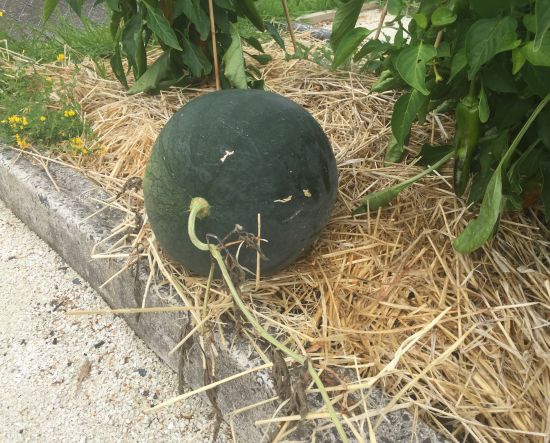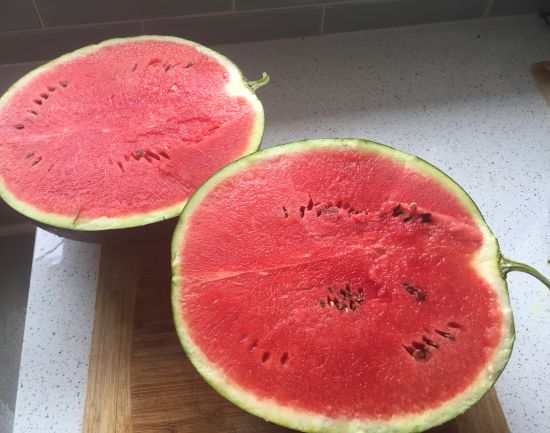
In the true tropics the dry season (winter) is the best time to grow watermelons, but if you live in a cooler climate, then summer is the growing season.
You need at least three months of reliably hot, sunny weather to grow and ripen a watermelon. During that time your average daily maximum temperature should be at least 20-25°C.

The secret to success when planting cucurbits is having really rich soil. Prepare your beds with compost, chicken manure and rock dust. And mound the soil high to keep warmth in and the soil free-draining. Watermelon vines can reach 5-6 metres long, so plant them where there’s plenty of open ground.
Watermelons will need to be mulched once planted. You can use recycled cardboard for this purpose or oat, pea or lucerne straw. If you choose cardboard, you’ll need to water the soil first then lay it down before planting. Cut an ‘X’ in the cardboard and fold under the four corners to create a square for each plant. Then place a few bricks on the cardboard to keep it from moving while planting. We’ll use weed mat pins to hold it down in the long term. It’ll keep the leaves off the ground and help keep the soil moist and at an even temperature. The cardboard will break down in a couple of months’ time and puts carbon back into the soil, as does mulch.
Watermelons grow easily from seed. They germinate within a few days. You may be tempted to use seed from a watermelon you bought, but don’t waste your time – it’s almost guaranteed to be a hybrid which doesn’t grow true to type. Start your watermelon seeds in the ground where you want them to grow. The soil should be at least 18°C.
If you’re planting seedlings, give your plants a good water before you take them out of their pot. Cucurbits have a delicate root system, so take care not to disturb the roots when planting.
‘Sugar Baby’ (small, globe-shaped) and ‘Moon and Stars’ (large, cylindrical) are popular heirloom varieties. ‘Sugar Belle’ (small, globe-shaped) and ‘Rapid Red’ (large, cylindrical) are popular hybrids.
Water your seeds or seedlings in well, but once the plants get growing, stop watering them. If you continue to water them, you’ll destroy the flowers so they can’t set, so they’re best left alone during the growing period. As watermelons start to mature, the lack of watering intensifies their sweetness.
Watermelons grow male and female flowers on the same vine. The smaller male flowers appear first. The female flowers are much larger. If the plant does produce female flowers but the little fruit at the base of it shrivels up and dies, then the flowers are not getting pollinated. Watermelon flowers are insect pollinated. If you think the insects aren’t doing their job, you can do it yourself.

Knowing how to determine when a watermelon is perfectly ripe is not easy. Some people watch the tendril closest to the melon stem. When it turns brown and dries up, the melon is ripe. The trouble with this method is that with some watermelon varieties, the tendril dries and drops off more than a week before the melon is fully ripe. Tapping the watermelon is another method – if it sounds hollow and dull, it’s considered to be ripe.
The surest sign of ripeness in most watermelon varieties is the colour of the bottom spot where the watermelon sits on the ground. As the watermelon matures, the spot turns from almost white to a rich yellow. Also, all watermelons lose the powdery or slick appearance on the top and take on a dull look when fully ripe.
Website designed by www.thecornerstorecollective.com
Developed by Richard Hpa